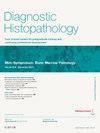艾滋病病理学的变迁:个人视角
引用次数: 0
摘要
人体免疫缺陷病毒/获得性免疫缺陷综合征(艾滋病毒/艾滋病)在 20 世纪 80 年代成为一种重要的新型复合疾病。通过对存活和死亡患者的病理观察,发现了多种相关病理现象。机会性感染和癌症、全身消耗综合征以及艾滋病毒对大多数器官造成的直接损害已得到充分描述,但新的综合征可能还会出现。艾滋病毒临床病理学的重大变化发生在 1996 年之后,当时出现了有效的抗艾滋病毒化疗,艾滋病不再是一个死刑判决。新疗法的并发症将继续出现,需要保持警惕。本文章由计算机程序翻译,如有差异,请以英文原文为准。
The changing face of HIV pathology: a personal perspective
Human immunodeficiency virus/acquired immune deficiency syndrome (HIV/AIDS) became a significant new disease complex in the 1980s. The wide range of associated pathologies came from pathological observation of living and dead patients. The opportunistic infections and cancers, systemic wasting syndromes and direct HIV-induced damage to most organs are well described, but new syndromes will probably emerge. The major change in HIV clinical pathology happened after 1996 when effective anti-HIV chemotherapy became available and AIDS ceased to be a death sentence. Complications of the new therapies will continue to present, requiring vigilance.
求助全文
通过发布文献求助,成功后即可免费获取论文全文。
去求助
来源期刊

Diagnostic Histopathology
Medicine-Pathology and Forensic Medicine
CiteScore
1.30
自引率
0.00%
发文量
64
期刊介绍:
This monthly review journal aims to provide the practising diagnostic pathologist and trainee pathologist with up-to-date reviews on histopathology and cytology and related technical advances. Each issue contains invited articles on a variety of topics from experts in the field and includes a mini-symposium exploring one subject in greater depth. Articles consist of system-based, disease-based reviews and advances in technology. They update the readers on day-to-day diagnostic work and keep them informed of important new developments. An additional feature is the short section devoted to hypotheses; these have been refereed. There is also a correspondence section.
 求助内容:
求助内容: 应助结果提醒方式:
应助结果提醒方式:


